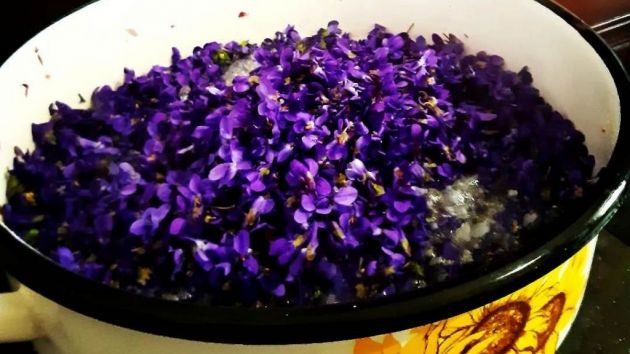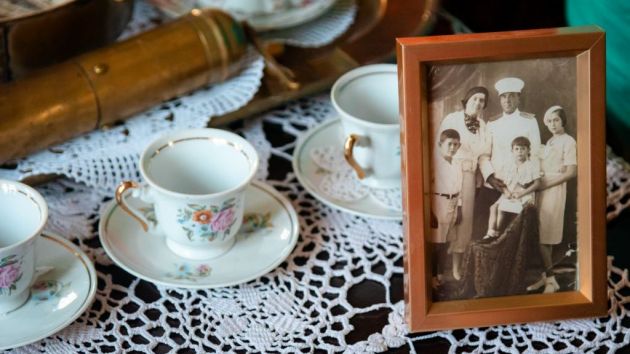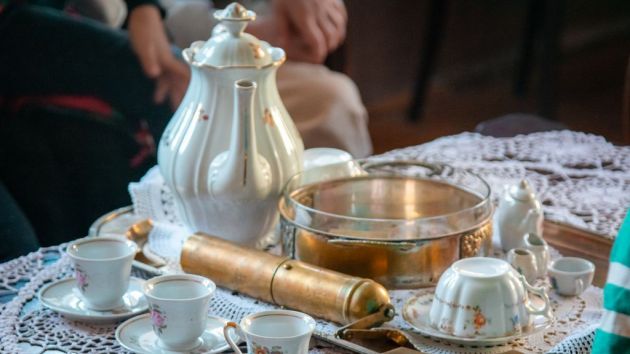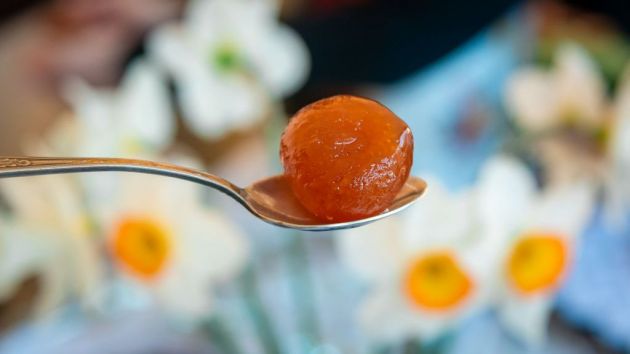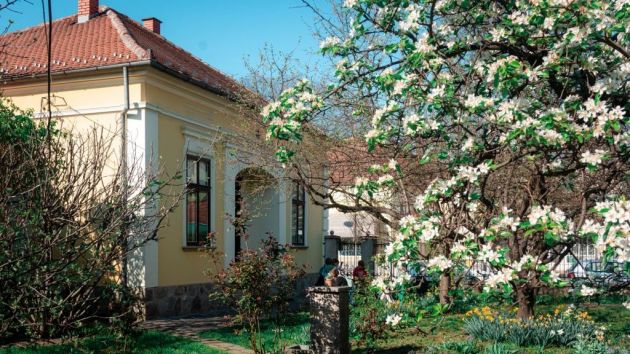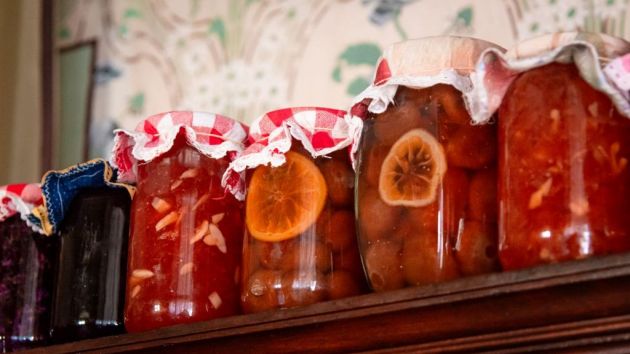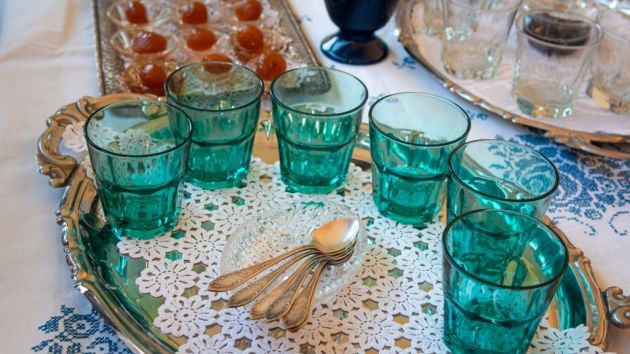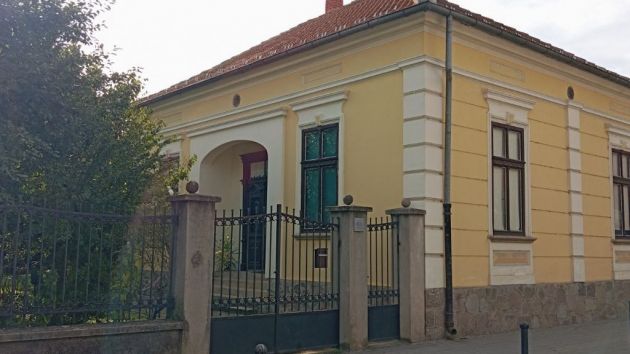All the love, heritage and tradition in one jar ŌĆō Extraordinary Museum of spoonsweet - Home of family Cvetic whose delicacy has reached as far as ShakespeareŌĆÖs town (PHOTO)
Source: eKapija
 Wednesday, 25.12.2024.
Wednesday, 25.12.2024.
 15:55
15:55
 Wednesday, 25.12.2024.
Wednesday, 25.12.2024.
 15:55
15:55
Spoon sweets were brought to the Serbian court by Princess Ljubica, and an orange preserve was served during the reconciliation of Tesla and Pupin, they say at the Museum (Photo: Lana Pazhiltseva)

It used to be almost unimaginable to visit somebody in Serbia without being served spoon sweets before coffee. It would be made from white cherries, or plums, in some areas from nuts as well, in some from roses, but sweet preserves were an inevitable part of a welcome in a Serbian home. Those who are slightly older probably remember that, when they wanted to eat something sweet when they were children, that was the only thing they could get from their grandmothers ŌĆō spoon sweets. And it was precisely a sweet preserve, made from oranges, that was served during one of the most significant reconciliations in the world of Serbian science ŌĆō the one between Tesla and Pupin. Sweet preserves were brought to the Serbian court by Princess Ljubica, who prepared it and served it to guests. It was only later that it spread from urban areas to villages in Serbia and became a custom. And when the populace started moving in droves to cities following the Second World War, due to the increased industrialization, apartments were too small for the preparation of this delicacy. Therefore, unfortunately, sweet preserves were replaced by some other, industrial, confectionery products as part of the welcome.
It is served as it was done over a century ago (Photo: Lana Pazhiltseva)

Polished tray, starched doily and silver spoon
However, in one city in Serbia ŌĆō Kraljevo, although it can still be experienced here and there in smaller places, but increasingly rarely, sweet preserves are still regularly served to guests ŌĆō visitors, just like it used to be done at the court ŌĆō on a well-polished tray made of silver or some other metal, with a starched and ironed doily, from a glass or crystal dish, with a silver spoon and glass of cold, fresh water. Not only is it served, it is also discussed at length, and various stories can be heard about it ŌĆō such as the ones about Tesla, Pupin, Princess Ljubica, workshops are organized, spoon sweets can be tasted as well, and they can also be made and bought. Like the ones that you must have tasted at least once, here you can also taste sweet preserves made from violets, lilacs, black locust flowers. All this happens in a museum dedicated to this delicacy ŌĆō Museum of spoonsweet - Home of family Cvetic 1908, initiated and founded by a mother and daughter ŌĆō Marina Lukic Cvetic and Lidija Cvetic Vuckovic, PhD.
The Museum of spoonsweet, as Lidija Cvetic Vuckovic, PhD, explains for eKapija, was created from a combination of the mother's knowledge and interest, as at the time she was the director of the Institute for the Study of Cultural Development, and those of her daughter ŌĆō an actor and an arts and media theoretician.
The founders of the Museum, Marina Lukic Cvetic and Lidija Cvetic Vuckovic, PhD (Photo: Lana Pazhiltseva)

The heritage which determined the future
ŌĆō We are officially open as a Museum, that is, a Citizens' Association, since 2016, and the family itself has been producing sweet preserves since the time between the two world wars, when Kraljevo had the State Airplane Factory, whose workers, both the French and the pilots, rated our delicacy very highly. The Cvetic house was founded in 1908 by Filip Cvetic, from Kopaonik, a pre-war trader of wine and rakija, who, although a modest man, had a specific taste and who decorated his minimal Secession-style house in an aesthetically specific way and had the walls richly painted using the al secco technique.
That kind of a heritage made it imperative to open to the public, so after several instances of participation in the events of the European Heritage Days and the renewal of the custom of the family patron saint's day ŌĆō within the candidacy of the Serbian patron saint's day custom for the UNESCO list ŌĆō we decided to continue the programs and continuously present both our interests and results to the curious audience ŌĆō Lidija Cvetic Vuckovic, PhD, begins her story about the Museum in an interview for eKapija.
The Cvetic house, as she further says, like most city houses, had been nationalized. Luckily, it was fully returned at the end of the 1980s.
ŌĆō At that house, sweet preserves have always been prepared and served, which, let us remind, is a heritage of city culture, as shown by the items which we found in the house: the tray of the great-great-grandmother Darinka, portraits of the founder, Filip Cvetic, her husband, and their son Dragomir, a dish for prepared grains and fruit, a hand-made doily, bottles and glasses for liqueur and wine, which we always use when we serve the guests, just like they did nearly 117 years ago, a metal pitcher, an icon of Holy King Stefan of Decani. Those, personally dearest, inalienable items, which, by pure chance, none of the usurpers needed, were later used to form and fill out the collections of which we are proud today. They were almost the only things we found in the house. There was no furniture or personal items of our Cvetic family, just small everyday items, which are infused with identity. Back in the times after the First World War, the Cvetic family used to sell spoon sweets made from roses, and the rest is history ŌĆō our interviewee says.
Few personal items of the Cvetic family have been saved from the house which was nationalized (Photo: Lana Pazhiltseva)

From cooks to curators
Lidija Cvetic Vuckovic, although she has a PhD in theory of arts and media, is an actor by profession. Still, even with being a piano player, a ballet dancer and her jazz and solo singing career, she turned to heritology out of love and passions. She considers heritology extremely important for the preservation of collective and personal consciousness and identity, and especially an interpretation of the cultural heritage.
ŌĆō Our decision to partially turn our house into a museum was not caused by material circumstances, but truly by enthusiasm and pronounced personal affinities. Thanks to that, we have overcome all problems easily and naturally, because the aim was not to merely commercialize the cultural content, but to contribute to the culture and communicate with the audience ŌĆō she says and adds that, from April this year, she is also the editor of the theater program of the Cultural Center "Studentski grad".
Parallel with this, she maintains the museum activities, which, she says, is not difficult for her at all. Furthermore, when the season for making sweet preserves arrives, she and her mother ŌĆō who are also the curators in this museum, pick up the pots, prepare the fruit and sugar and keep a close watch over the wood-burning stove, preparing the sweet preserve so that it is just right ŌĆō not too thick, not too watery, translucent and tastefully spiced. A few years ago, the person in charge of sweet preserves at the Cvetic house was Lidija's grandmother Vera, but they unfortunately lost the oldest family member at the age of 90. And this delicacy, which is also made from violets, and which has reached as far as Great Britain ŌĆō the Shakespeare Institute in Stratford-upon-Avon within the University of Birmingham ŌĆō is also contributed to by her father, Dragomir Cvetic. He is irreplaceable anyway when it comes to the economic aspect of the Museum's operations, and he personally hand-picks the violets for this preserve. One jar requires around 2,000 self-grown flowers. Also, Lidija's husband, Milos Vuckovic, an officer, a quality management expert and the manager of the program "People and Culture", also takes part in the strategic plans of the Museum.
One jar requires as many as 2,000 hand-picked violet flowers (Photo: Lidija Cveti─ć Vu─Źkovi─ć)

It can only be made from old fruit varieties and self-grown hand-picked flowers
ŌĆō We prepare the spoon sweets from old fruit varieties and self-grown flowers from our historic garden and with traditional spices: sweet scented geranium, lemon, vanilla stick or clove. We certainly launch innovations in the sense of variety, but there are no compromises with technology. Sweet preserves cannot be made in a factory anyway, or in big quantities at once. Just like they are not consumed "by the bucketful", or quickly. The sweet preserves from the Cvetic house have reached Japan, Australia, India, America, AfricaŌĆ” Those rare sweet preserves made from violets, lilacs, which is also our invention, because we have to emphasize that not every variety is edible or suitable for processing in this form ŌĆō so that the readers would not end up with a bitter soap, then also from black locust flowers, roses, are the most demanded ones outside the borders of our country ŌĆō adds eKapija's interviewee.
And when she takes off her apron, Lidija, together with her mother, Marina, her father, Dragomir, and her husband, Milos, professionally enters her roles as a heritologist, curator, conservator, researcher and creative director.
ŌĆō There are more roles than there are us. Each one of us welcomes different groups of tourists and visitors, because the dynamic and rich family story can be told from various angles, which gives it a special magic ŌĆō adds our interviewee.
The strictly professional aspect of the Museum, which concerns the archiving, maintenance and interpretation of the collections: glass, porcelain and textile, are care of her mother, Marina, whereas Lidija is in charge of the designer, program, predominantly educational and media aspects. Visits to the museum are regular, and the times are scheduled ahead so that the guests would not interfere with each other and thereby disturb their experience in the space of the salon as a time-machine of sorts. The visits, our interviewee adds, require a certain time interval and they are never identical.
The Cvetic house was founded in 1908 by Filip Cvetic from Kopaonik, a pre-war wine and rakija trader (Photo: Lana Pazhiltseva)

Foreigners know more about the culture of spoon sweets
ŌĆō The most frequent visitors are families from the whole Serbia and they display the most enthusiasm, as well as individuals and curious people who are looking for authentic spaces and the Secession era style, from the beginning of the 20th century. We are often visited by foreigners, who get informed about our museum online. Those are nearly all those who also visit Zica, Studenica, Maglic, Mataruska Banja or Vrnjacka Banja and the fact is that, being prepared for traveling our areas, they know more about the culture of spoon sweets than locals, who would be presumed to have such knowledge ŌĆō adds Lidija.
She points out that the people of Kraljevo visit the Museum the least and that, aside from the National Museum in Kraljevo, who are their neighbors and close associates, there's quite a lack of local support and interest.
ŌĆō As a worker who is simultaneously dedicated to both culture and education, I am sorry to see a lack of interest from schools and pedagogues in the serious number of programs for school-age children which we regularly promote and organize. However, it is very nice that we are given maximum support from state museums, libraries and galleries throughout Serbia, which, to us as guests, gladly and continuously open their doors for lectures, exhibitions and museum theater. So, the Museum of spoonsweet can travel as well. The concept of guesting is planned so that our items always accompany us, so that the museum can be partially packed and eaten, and even reconstructed. Each presentation is different, interactive, direct, adapted and inclusive ŌĆō our interviewee says.
She says that their activities are very varied and numerous and that they don't differ from those that are practiced by large museum institutions.
Guesting exhibitions and sweet travelogues
ŌĆō We do scientific research, archiving, collecting, conservation and restoration, and in the program sense, curation, exhibition and education activities, which is not just present in the space of our museum. The Museum of spoonsweet is guesting with a big exhibition "Sweet husband, why are you not here?" about the history of housework schools in Serbia, expert lectures which also feature an exhibition part and tasting sessions: "Sweet Travelogues", "Bread on Serbian Medieval Frescoes", "The Wine Saga of Serbia", "Murano Fashion" about the techniques and the aesthetic of the preparation of the Murano glass in Serbia, and a play by the museum theater for children "AliceŌĆÖs First Tea Party", which deals with the culture of drinking and serving tea in the world and here. A large edition of a cookbook with recipes from housework schools is also in preparation as are two new programs ŌĆō one which takes you to your favorite breakfast and brings back memories of the sweets and parties from the childhood of one of the biggest Serbian painters and another, which takes us to the embroidered dynastic portraits. We have an exciting year ahead of us, and we regularly publish the monthly schedule on social networks ŌĆō our interviewee announces and invites everybody who's interested to visit the Museum of spoonsweet and hear stories about this delicacy, which she calls "the first Serbian diplomat."
(Photo: Lana Pazhiltseva)

And until then, prepare at least your own home for a jar of sweet preserve. In some schools and kindergartens in Belgrade, they still give the preparation of a sweet preserve as homework to children and their parents.
And then, in the morning, when you get up, before you get on with the rest of your day, take at least that one spoon of fruit boiled in sugar ŌĆō just enough not to harm your health. We believe that the sweet taste will make the day sweeter too. And it doesn't have to be an unusual one ŌĆō quinces, some walnuts and a little standing beside the stove are enough. And for the rarer ones ŌĆō you know who to contact.
Danijela Stanimirovic-Gavrilov
U blizini:
Companies:
 Zavod za prou─Źavanje kulturnog razvitka Beograd
Zavod za prou─Źavanje kulturnog razvitka Beograd
 Ustanova Dom Kulture studentski grad Beograd
Ustanova Dom Kulture studentski grad Beograd
 Narodni muzej Kraljevo
Narodni muzej Kraljevo
Tags:
Museum of spoonsweet Home of family Cvetic
Institute for the Study of Cultural Development
Cultural Center Studentski grad
National Museum Kraljevo
University of Birmingham
Marina Luki─ć Cveti─ć
Lidija Cveti─ć Vu─Źkovi─ć
Dragomir Cveti─ć
Milo┼Ī Vu─Źkovi─ć
Filip Cveti─ć
sweet preserves
spoon sweets
making spoon sweets
preserve from violets
preserve from oranges
spices
flowers
lilacs
black locust flowers
cookbook
Comments
Your comment
Na┼Ī izbor
Most Important News
Full information is available only to commercial users-subscribers and it is necessary to log in.
Follow the news, tenders, grants, legal regulations and reports on our portal.
Registracija na eKapiji vam omogu─ćava pristup potpunim informacijama i dnevnom biltenu
Na┼Ī dnevni ekonomski bilten ─će stizati na va┼Īu mejl adresu krajem svakog radnog dana. Bilteni su personalizovani prema interesovanjima svakog korisnika zasebno,
uz konsultacije sa na┼Īim ekspertima.


 Izdanje Srbija
Izdanje Srbija Serbische Ausgabe
Serbische Ausgabe Izdanje BiH
Izdanje BiH Izdanje Crna Gora
Izdanje Crna Gora


 News
News







